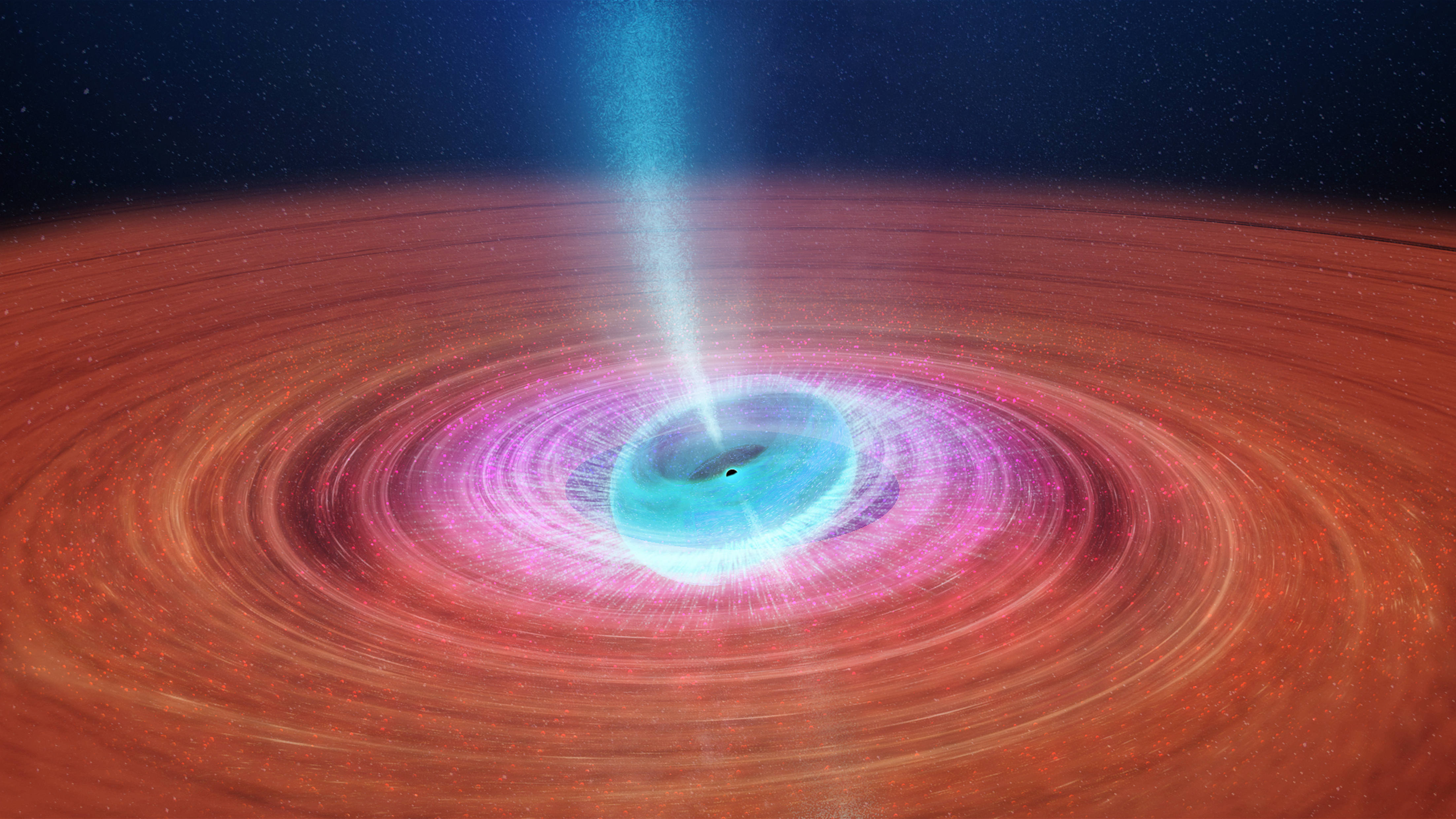Black Holes are strange creatures. They are objects so dense that light cannot escape them. Since black holes don’t emit light, and most of astronomy relies upon light to see the heavens, we can’t easily see black holes directly. But we can study them indirectly by observing how light and matter near them are affected.
One way is to watch how matter falls into a black hole. The same powerful gravity that traps light also squeezes and heats nearby matter tremendously, causing it to glow with intense light. Often, a small amount of this matter is hurled away from the black hole at speeds close to that of light. This matter streams outward as relativistic jets. These jets emit radio light that astronomers can see. By capturing images of these jets, astronomers can better understand how black holes capture nearby gas, which often form into accretion disks that feed the jets.
The Milky Way is thought to have more than 100 million stellar-mass black holes. They are the remnants of massive stars. Thousands of these black holes are part of a binary system with a star, but only 20 of these binary systems have been found. They are often too faint to be observed with current telescopes.
The next generation Very Large Array (ngVLA) will be sensitive enough to see many of these binary black holes. With an array of antennas from Hawaii to the Virgin Islands, and from Northern Mexico to Washington State, ngVLA will create radio images hundreds of times sharper than the optical images of the Hubble Space Telescope (HST) and the infrared images of the James Webb Space Telescope (JWST). The ngVLA image resolution will allow us not only to detect stellar-mass black holes, but it will also allow us to measure their distances, and capture movies of their jets as they change over time.
The ngVLA will also allow us to study the mergers of dense objects such as neutron stars. These mergers create radio jets and also produce gravitational waves observable by LIGO and Virgo. Gravitational-wave telescopes can pinpoint the location of a neutron star merger to within an area of the sky roughly the size of the Moon. This is precise enough for ngVLA to capture radio images of the merger. Multi-messenger astronomy combines these observations to give astronomers the richest view of these powerful events.
Since radio astronomy can also be done during the daytime, the ngVLA will not be limited to nighttime regions of the sky. By capturing high-resolution images of gravitational wave events, the ngVLA will become one of the most powerful tools of multi-messenger astronomy.






